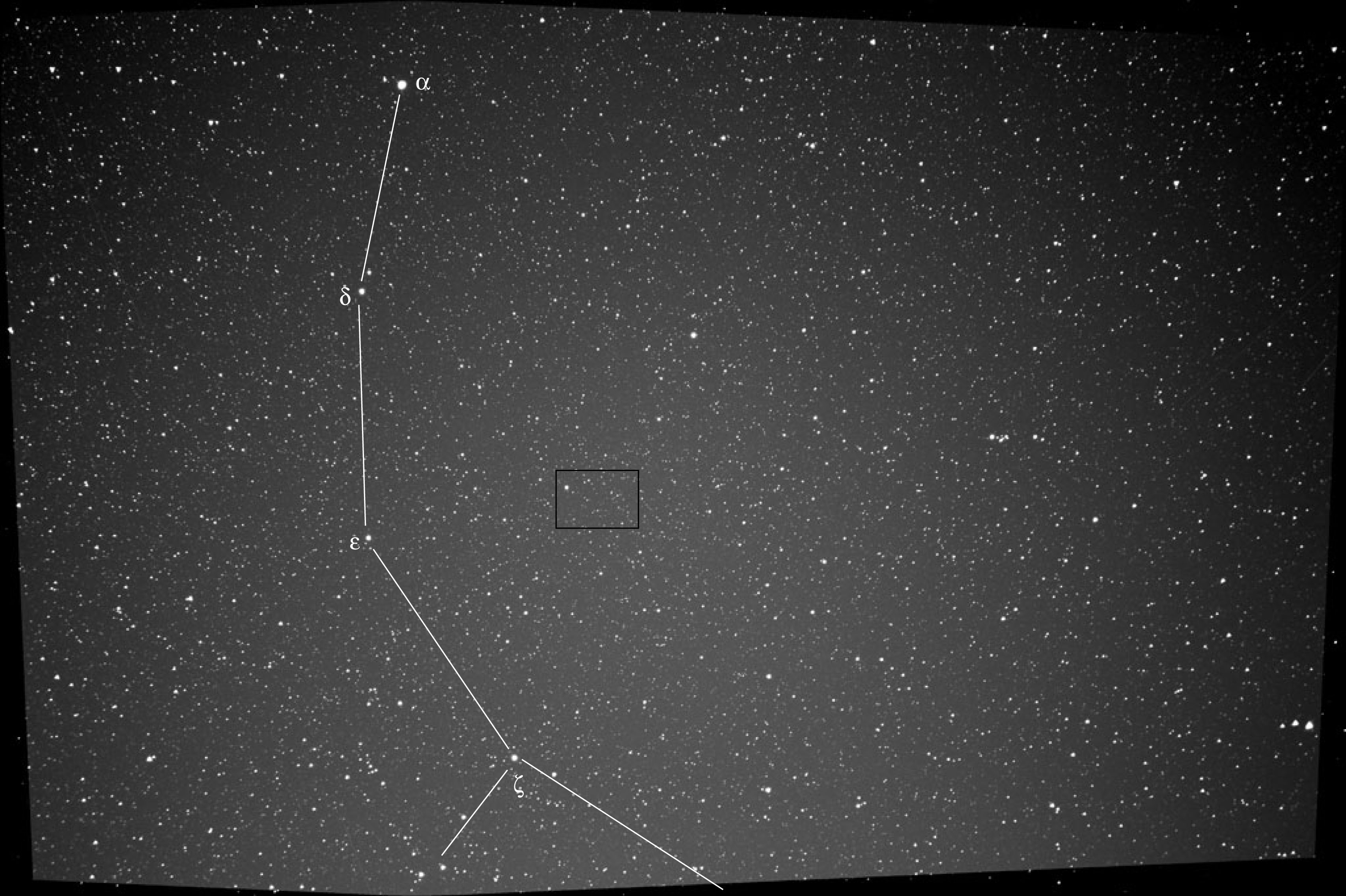
"I've
just -- at 6:40 pm PST -- begun a series of exposures centered on
the predicted path of asteroid 2013 DA14
through Ursa Minor (the Little Dipper). Each exposure is 20
seconds, exposures are 60 seconds apart,
using a 50mm f/2.5 lens on a Canon 60Da camera. It's chilly out,
but I am hoping the battery holds out for
three hours (180 exposures). At 6:30, the predicted magnitude of
the asteroid is 11.7. By 9:30, it's predicted
to be 12.7. I did some test shots last night, and the lens/camera
combo can reach ~12.5 mag.
"It's a beautiful clear night, the first in months! Stay
tuned.
Tomorrow I'll figure out whether I've captured the little guy as
he speeds away from Earth!"
On
February 15, 2013, the small asteroid 2012 DA14 passed within
17,000 miles of the Earth's surface. Unfortunately for
observers in North America, closest approach occurred just before
local noon. Eight hours later, the object had moved
into Ursa Minor, faded to 12th magnitude, and was still moving
rapidly against the stars. Living in rainly Oregon,
I hardly dared to think it might be observable, but by
mid-afternnon on the day, the clouds rolled off and the sky
was deep blue!
Below
are the predicted coordinates obtained from the Minor Planet
Ephemeris Service. The columns give the
year, month, day, hour, minute, second in UTC, then the RA and
Dec, the visual magnitude, and the rate of
motion in arcseconds per minutes, and finally the azimuth and
altitude from my location. The best time to observe
2012 DA14 was evidently right around 03:00 UT, that is, as soon
as possible after sunset. I have highlighted this time
period in a
lighter color.
I have added an underscore "_" character in front of
the single-figure magnitudes
to align the columns better. Because it was fading so rapidly,
waiting meant it would be dimmer.
Even then, though, it would be around 12th magnitude, whichwould
have been easy in an 8-inch telescope,
but not with the equipment I planned to use.
2013
02 15 150000 06 25 24.9 -84 05 55 12.1 273.85 071.8 184 -50
2013 02 15 160000 08 47 34.6 -80 42 10 11.4 417.83 038.1 191 -50
2013 02 15 170000 10 04 45.6 -72 44 57 10.5 694.27 020.4 203 -53
2013 02 15 180000 10 46 18.3 -57 30 50 _9.4 1272.4 011.6 229 -58
2013 02 15 190000 11 12 04.1 -28 39 31 _8.0 2262.8 007.1 284 -55
2013 02 15 200000 11 30 45.6 +12 08 04 _7.3 2340.5 006.2 327 -27
2013 02 15 210000 11 47 51.7 +42 31 33 _8.3 1341.9 008.3 346 -01
2013 02 15 220000 12 06 18.0 +58 54 16 _9.4 729.35 012.0 356 +14
2013 02 15 230000 12 27 12.3 +68 05 09 10.2 440.99 016.5 001 +23
2013 02 16 000000 12 51 12.9 +73 45 54 10.8 294.14 021.5 003 +29
2013 02 16 010000 13 18 52.5 +77 33 00 11.3 210.79 027.1 005 +33
2013
02 16 025000 14 20 36.5 +81 48 44 12.0 128.81 038.6 005 +38
2013 02 16 030000 14 26 56.4 +82 05 03 12.1 123.81 039.8 005 +38
2013 02 16 031000 14 33 23.3 +82 20 28 12.2 119.10 040.9 005 +38
2013 02 16 040000 15 07 15.2 +83 25 42 12.4 98.860 047.0 005 +39
2013 02 16 050000 15 50 30.0 +84 21 59 12.7 80.140 054.6 005 +40
2013 02 16 060000 16 35 00.8 +85 00 06 12.9 65.400 062.2 005 +41
2013 02 16 070000 17 18 10.1 +85 24 30 13.1 53.490 069.3 005 +42
On
the off-chance that the night would be clear, I had made some
test exposures with a 50mm f/2.5 macro lens (chosen for
its exceptionally sharp star images). Because the object was so
near the pole, I suspected it would not be necessary to have an
equatorial
mounting. Using my Canon 60Da camera, I tried exposures from 6
seconds to 60 seconds at various ISO speeds, and found that there
was
minimal trailing in a 20 second exposure at ISO 1600, and the
images would just reach 12th magnitude.
The image below shows the region covered by the camera and lens:

The small outlined region shows the approximate area containing asteroid 2012 DA14:
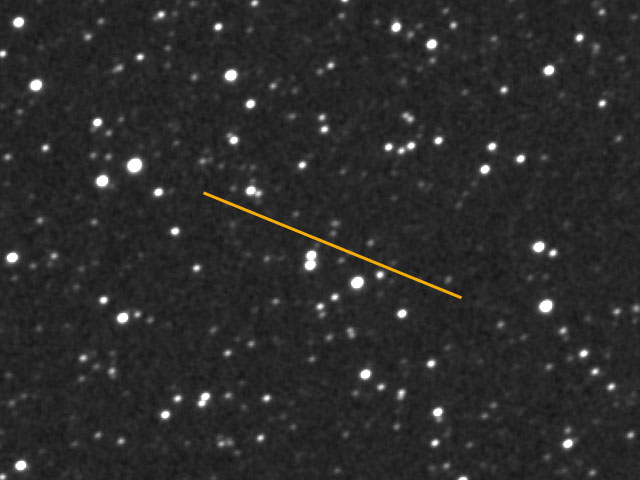
The
line shows the computed path for the 20-minute period from 02:50
to 03:10. I used the AAVSO's VSP
to plot a chart centered on the ephemeris position computed for
2013-02-16 03:00:00 to tranfer the
computed coordinates to the images taken with the camera. Please
note the 30-degree CCW
rotation in the camera images relative to the north-at-top chart
below.
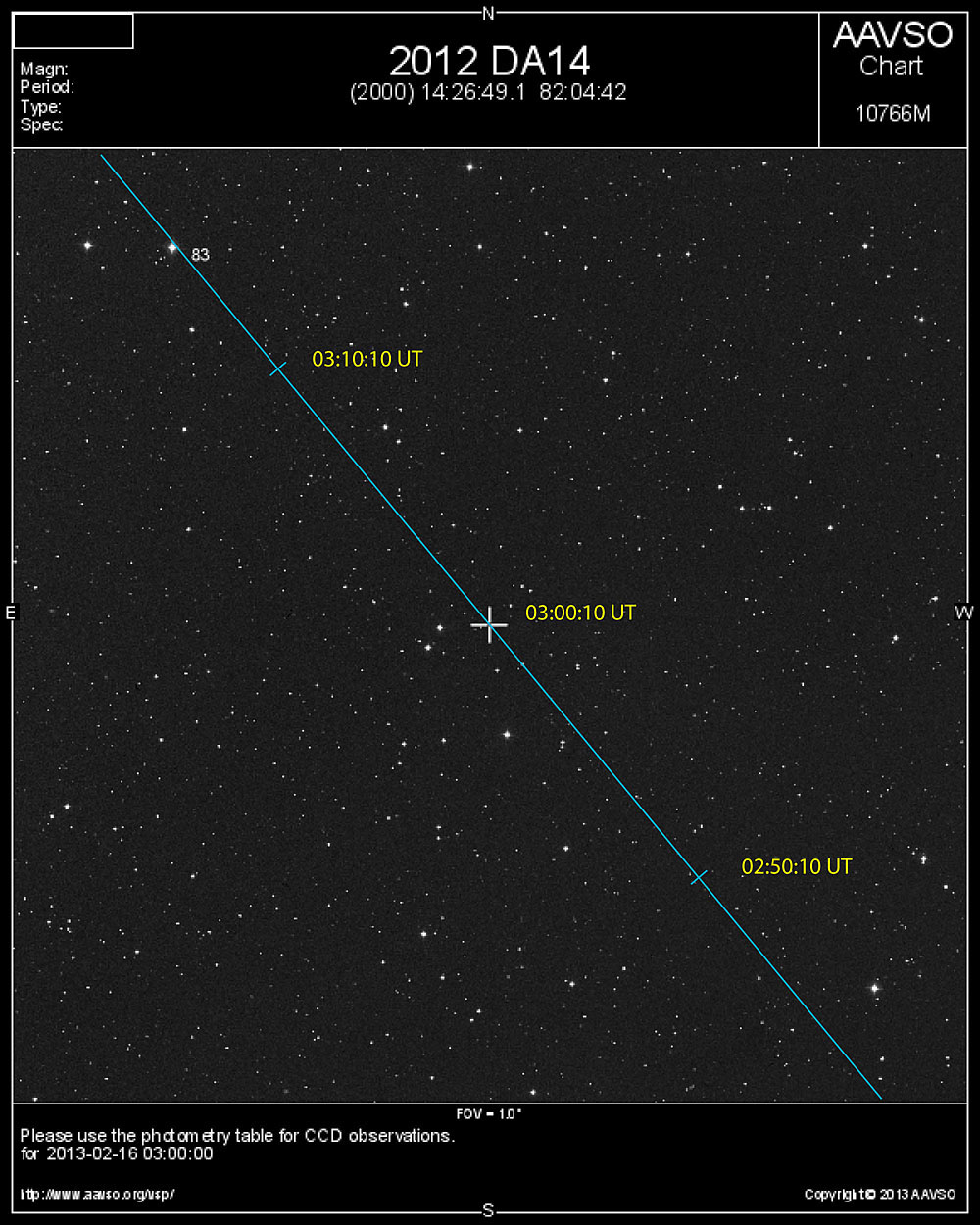
"Last
night (Feb 16 UT) I captured 249 20-second images covering the
field containing asteroid 2012 DA14
using a 50mm f/2.5 lens. That's right, I was hoping to get a 12th
mag asteroid with a 20mm aperture lens!
Anyway, the first 150 images were okay; the lens fogged over for
the last 100 or so.
"I've had a preliminary look at the images. At mag 12,
getting the asteroid is really pushing it, and the image
will be a short trail rather than a star-like point. I've got
other stuff to do, but on Tuesday I will
process 20 minutes of images from 02:50 to 03:10 UT. Cross your
fingers... <grin>
Capturing
the image data went smoothly. I captured 249 exposures of 20
seconds each. The lens remained
dry for the first 120 images, but progressively dewed over, and
the last hour was a lost cause. I used Canon's
interval timer to take the 20-second exposures at 60 second
intervals.
Here are three images taken 60 seconds apart, at 03:03:10, 03:04:10, and 03:05:10:
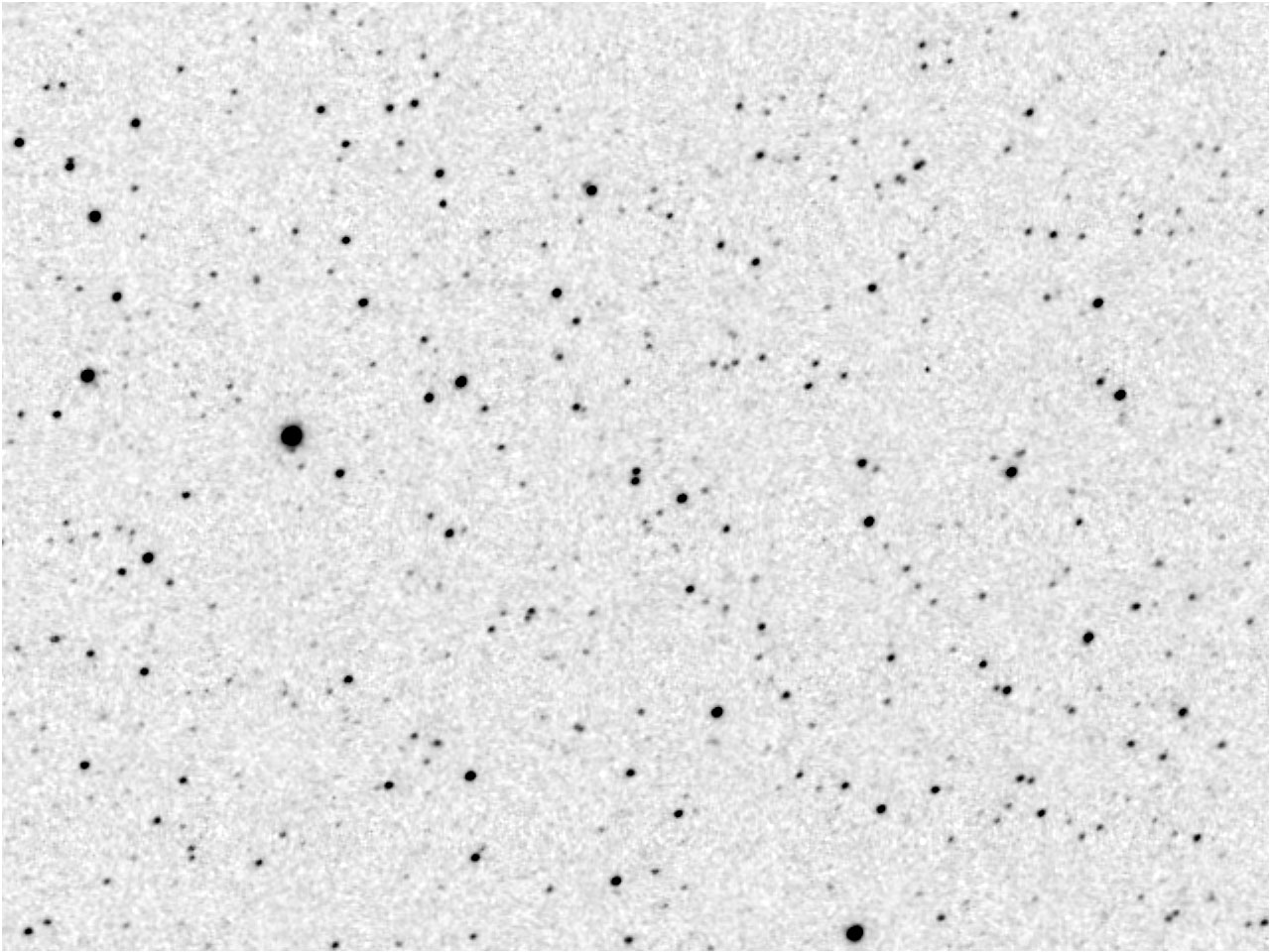
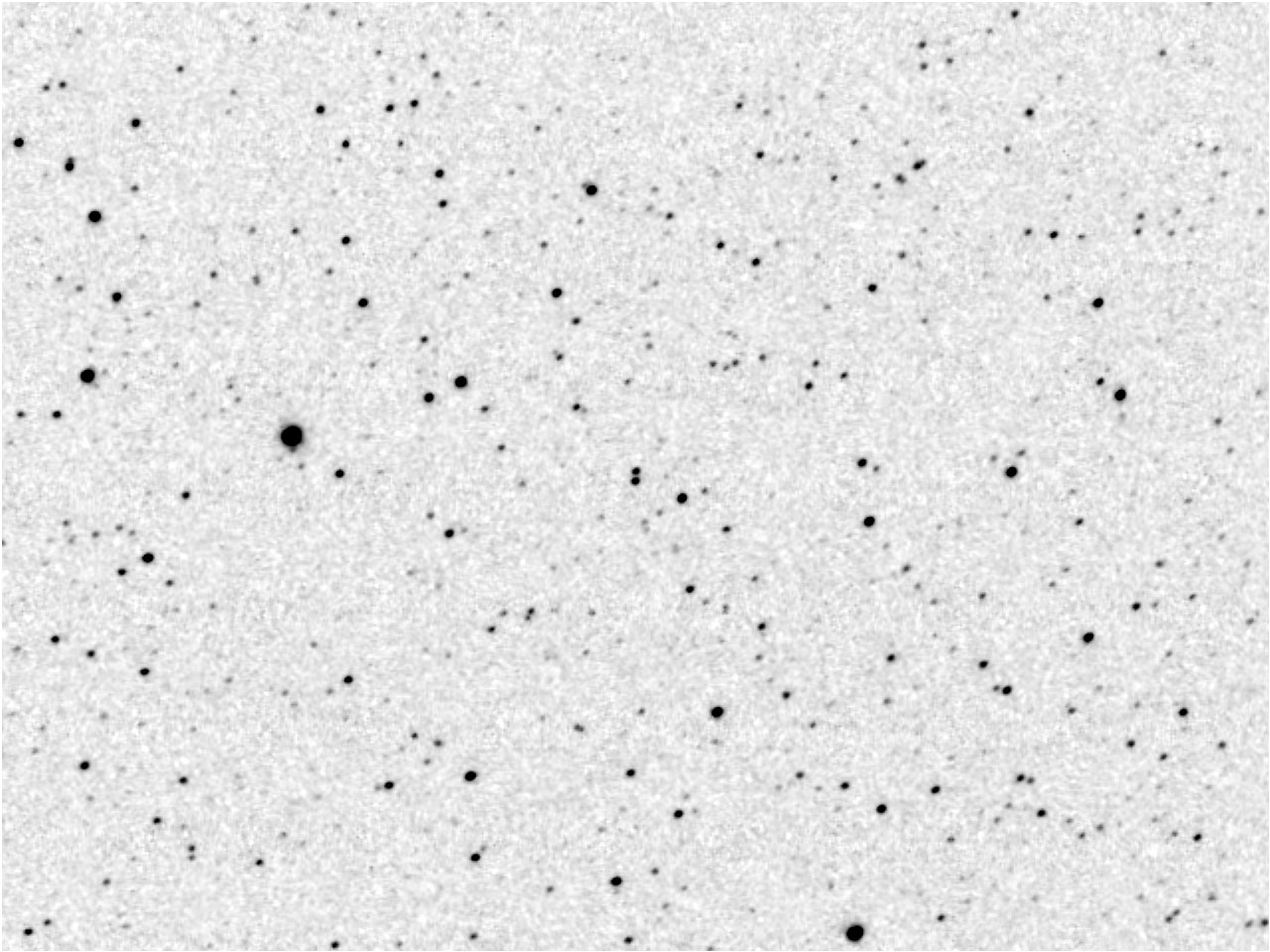
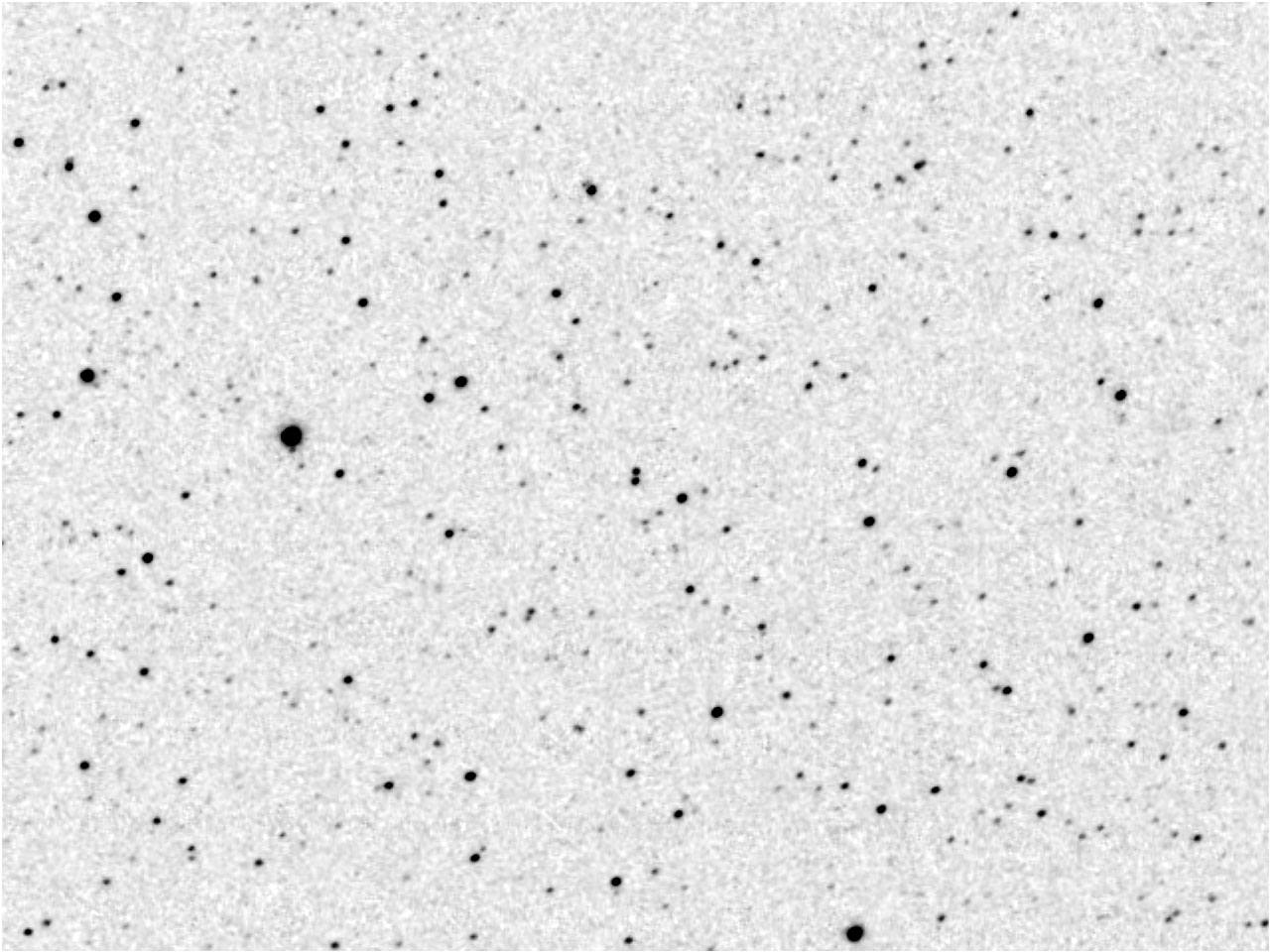
"The
images of the asteroid are VERY, VERY faint, right down groveling
in photon noise, warm pixels,
deBayerization artifacts, and probably a few cosmic rays. Bear in
mind that the 50mm f/2.5 lens
has 1% the light collection area of an 8-inch telescope!
"This like the dancing dog: it's not that he dances well,
but that he dances at all."
Finding asteroid 2012 DA14 is left as an exercise for the viewer. The images are VERY, VERY faint, but they are there.
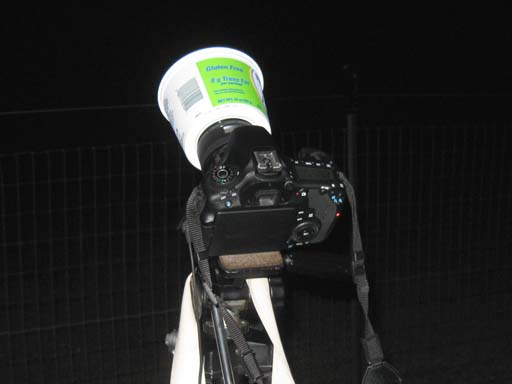
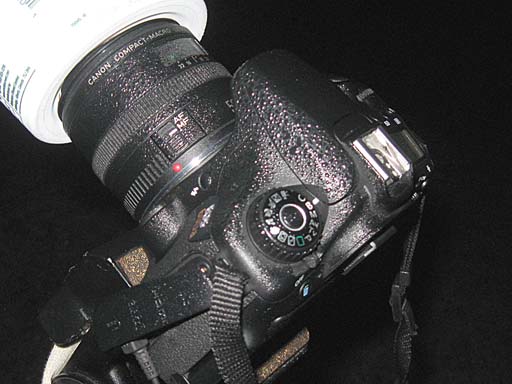
Left: the camera at 02:30 UT ----- Right: the camera four hours later!
If
I did not have a series of 21 images in which this ridiculously
small captured image moves from frame to frame, I would
hestitate to claim that it is real. But I have marked it in the
image below, taken at 03:03:10:
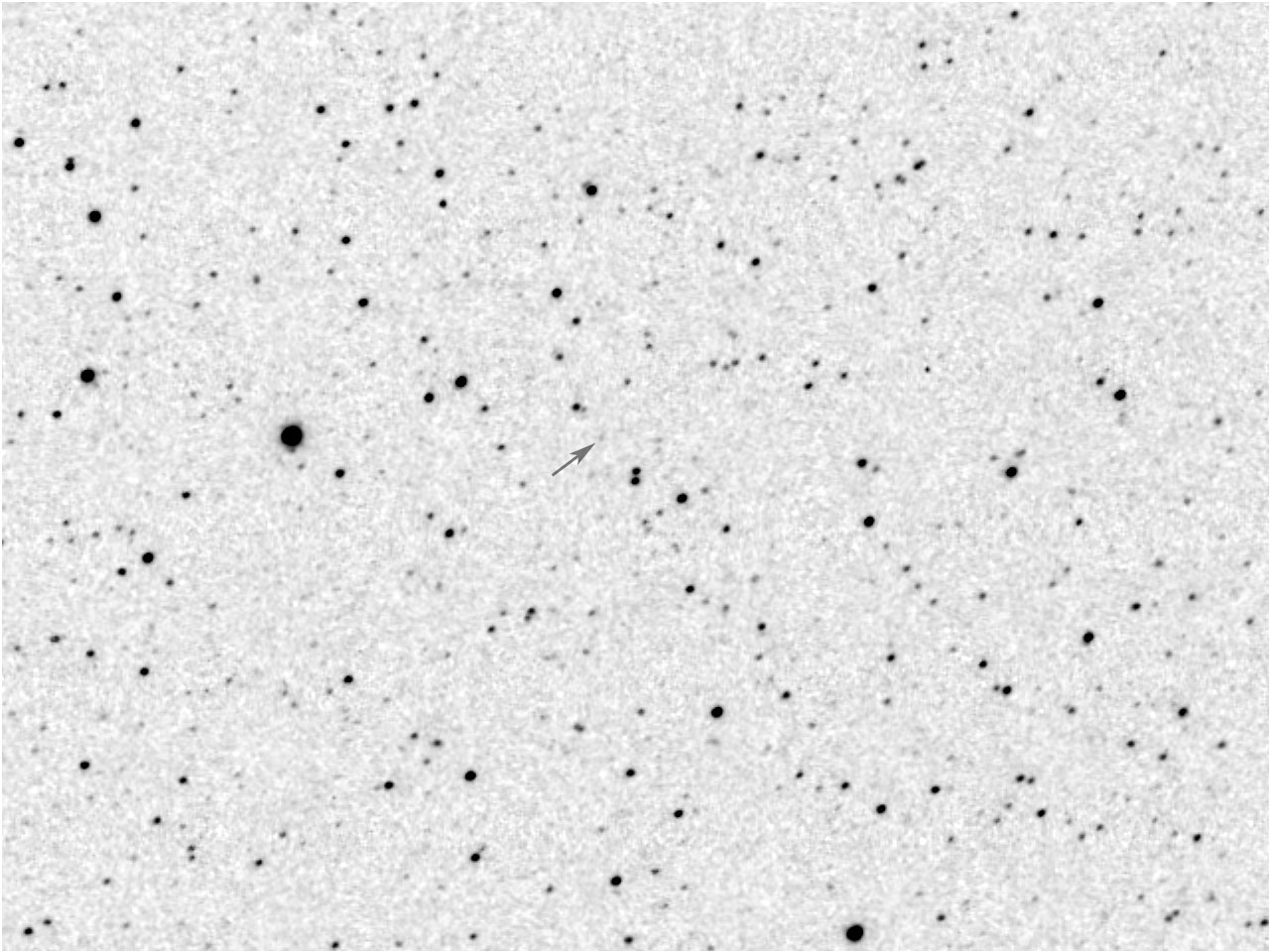
Okay,
here's the key: above is the first of the three images, taken at
03:03:10 UT. The object is moving in the "10 o'clock"
direction.
It's equally visible in the 03:04:10 image, but very faint in the
03:05:10 image. I suspect the variation is caused as the image
moves across differing elements of the Bayer array on the image
sensor in the camera.
Finally,
I made a movie with all 21 images that I processed carefully, and
posted it on YouTube at: http://youtu.be/9IRiZQR02bQ.
You can see the moving asteroid, but YouTube automatically
compresses and "enhances" video posted on their site,
and this has had the effect of adding compression artifacts and
enhancing the noise.
Return to Richard Berry's Home Page